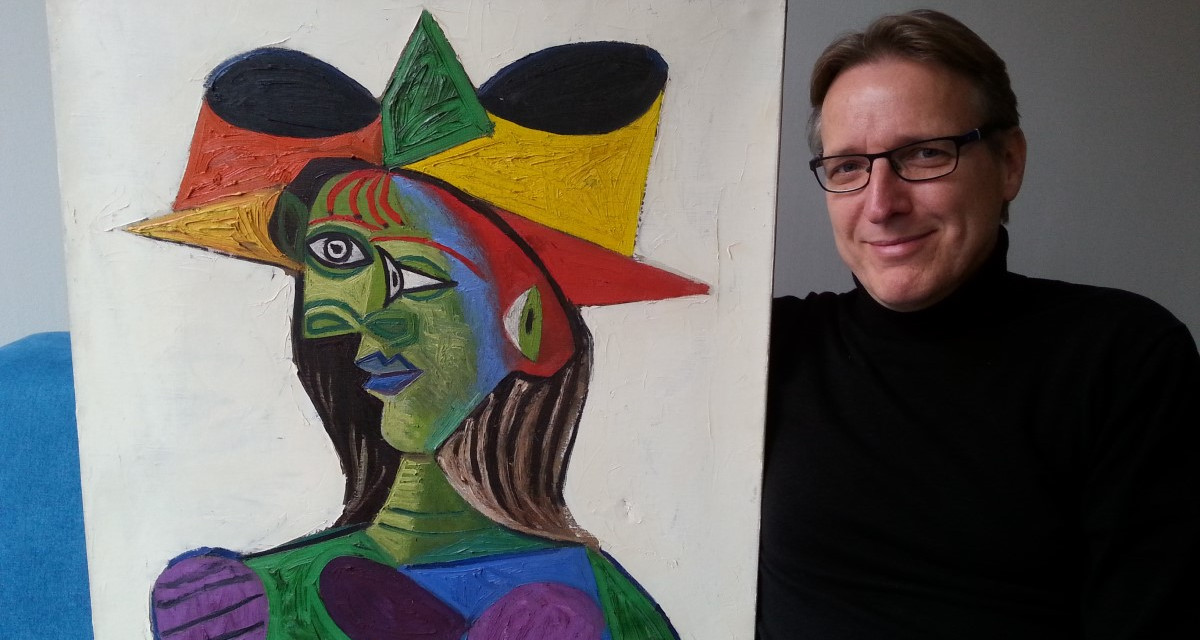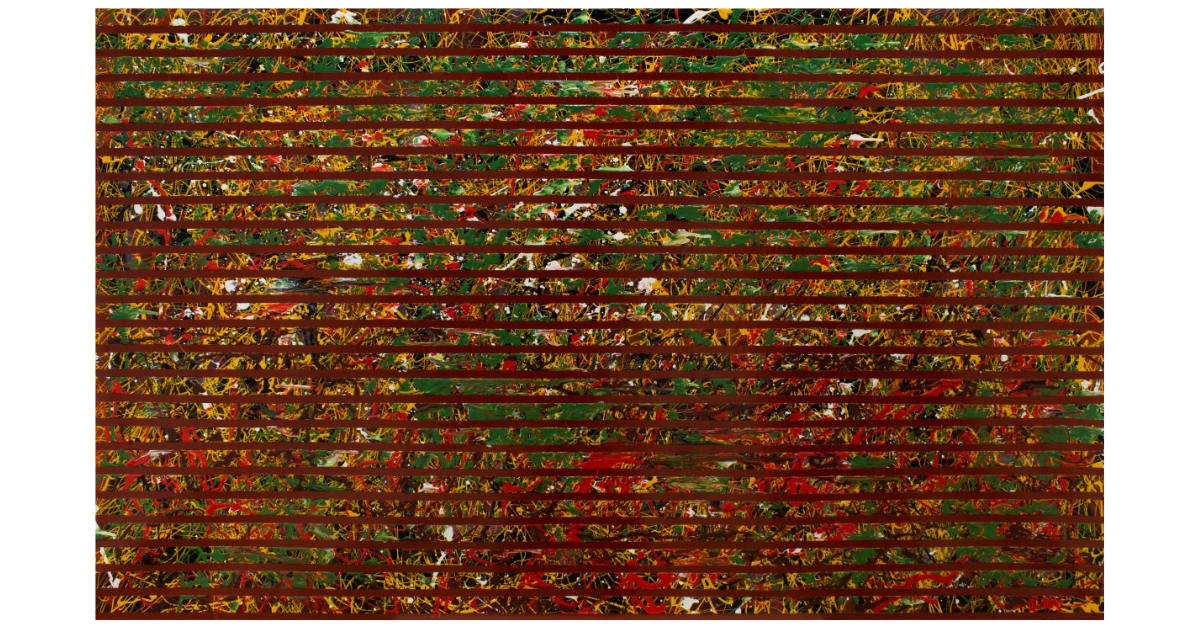Arthur Brand has recovered over 200 artworks, including rare manuscripts and paintings by Pablo Picasso and Salvador Dali. The Dutch art sleuth reveals all about cracking cases and the codes of the criminal underworld
Words: Will Moffitt
A tipoff can come from anywhere at any time for Arthur Brand. It might be an anonymous phone call in the dead of night or an encrypted email from someone claiming to know clandestine information about a stolen masterpiece.
In late 2018 the Dutchman received a call from an Iranian art dealer based in Germany who had been contacted by three men with links to the Iranian embassy. They were likely secret service agents who were searching for a 15th-Century manuscript called The Divan of Hafez which had been stolen from Iranian book collector Djafar Ghazy before his death in Munich in 2007. Your run-of-the-mill dusty old tome this was not. Composed in fourteenth century Persia by the Iranian poet Hafez, the gold-leafed collection of works was valued at €1 million.
A chase ensued. If he found it before the Iranians, Brand vowed to return The Divan to Ghazy’s relatives. His intuition led him to London where he sent a middle man to ask questions on his behalf. As it turns out, a Mayfair art dealer had unwittingly sold this precious asset not knowing that it had been looted.

Hearing that the Iranians were on his tail the buyer had gotten spooked and fled to Paris. Brand called him, and threatened to hand him over to the Iranians unless he returned the manuscript. The ploy worked. The buyer returned the tome and Brand duly handed it back to the German police.
Brand regularly returns to Mayfair. It’s a part of London that he visits to soak in art and culture. “Mayfair is one of the most beautiful places for art and antiquities. I love it,” he says. “I started my career there. The first people I met were in Mayfair… the collectors, the dealers, the odd smuggler.”
For most people the Hafez manuscript escapade sounds like a plot to a Dan Brown novel or a Hollywood thriller, but for Brand it’s business as usual. The Dutchman has recovered over 200 stolen artworks, a tally that has crystallised his reputation as the ‘Indiana Jones of the art world’. These works include paintings by Pablo Picasso and Salvador Dali, along with gargantuan bronze horse sculptures that belonged to Adolf Hitler. This calling to save maligned masterpieces has seen him scour the criminal underworld and cross paths with neo-Nazis, ex-KGB spies and the Italian mafia.
Speaking to me over Zoom wearing a flat cap and wrapped in a scarf, the Dutchman is polite and disarmingly humble. He eschews tales of personal heroism, preferring to focus on the day to day practicalities of this highly unusual ‘hobby’. “First of all you don't need a driver's licence to do this and you don't have to be rich, because I'm not,” Brand says. “However, you must work with the police and, in the criminal world, you must keep your word.”
Since 2002 Brand has been chasing pilfered artworks alongside his day job as an art advisor. His interest in art sleuthing was piqued when he read a statement by the CIA that ranked art crime as the fourth or fifth largest criminal enterprise in the world. “There was a lot at stake and nobody was interested. So I started to specialise in the world where art and crime meet.”

According to Brand, at least 30 per cent of the art market is fake and most of the time there is no reward for finding lost works because they are too expensive for museums and galleries to insure. Instead, he is motivated by the thrill of detective work and a desire to reclaim stolen history.
“A lot of these antiquities are illegally excavated. If you illegally excavate a king's grave in the Middle East that is 3000 years old, a lot of important historical information is lost,” Brand says.“It's like ripping up pages of a history book.”
Every case is different. Sometimes Brand tracks down the thief, sometimes the middleman spills the clues or, as in the case of The Divan of Hafez, the dealer admits a mistake. In some rare cases Brand finds a stolen item on the buyers’ premises. In 2019 he traced seventh-century visigothic stones in a garden in North London. Looted from the Santa Maria de Lara church, one of the oldest Catholic chapels in Spain, the artefacts had been missing for 15 years. They were sold as garden ornaments to an English aristocrat who bought the works for around £50,000.
Often, as Brand explains, nobody wants to purchase a stolen artwork. Said paintings might be a part-payment for a cash or drug deal, and once the case makes the evening news the criminals in question are keen to dispose of the asset. Rather than turn to the police the looters go to Brand. In some cases they do so out of superstition, fearing that they might be cursed forever. “I know a lot of criminals who would rob old ladies, but they wouldn't steal from the church because it's bad luck. They’re superstitious.”
Sometimes the sheer magnitude of an artefact overwhelms even the most hardened criminals. Last June, Brand’s doorbell rang. Sitting on his porch was a cardboard box. Inside it was the Précieux Sang – “Precious Blood” in French – a jewel-encrusted vessel with two lead vials containing pieces of linen believed to be doused with the blood of Jesus. Stolen the same month from a church in Normandy the thieves had contacted Brand via an encrypted email. “They said: ‘Look, either we're going to destroy it or we'll bring it to you’”.
Currently Brand is investigating a number of high-profile cases. Not least the world’s largest art heist: the Isabella Stewart Gardner Museum Robbery in Boston in 1990 when two men posing as police officers tied up the museum guards and left the premises with 13 works by world renowned artists. He is also searching for a set of gold rosary beads carried by Mary Queen of Scots stolen in a raid on Arundel Castle and an Anthony van Dyck painting taken from Oxford University.
For Brand the most rewarding part of a case is when, for a brief window, he is the only person in the world that can stare at a masterpiece in blissful solitude. “When I recover a piece I always keep it on my wall for one night just to enjoy it,” he says. “The next day, I’ll call the police.”

If you have any information pertaining to lost or stolen artworks please contact Arthur at: info@artiaz.com.








